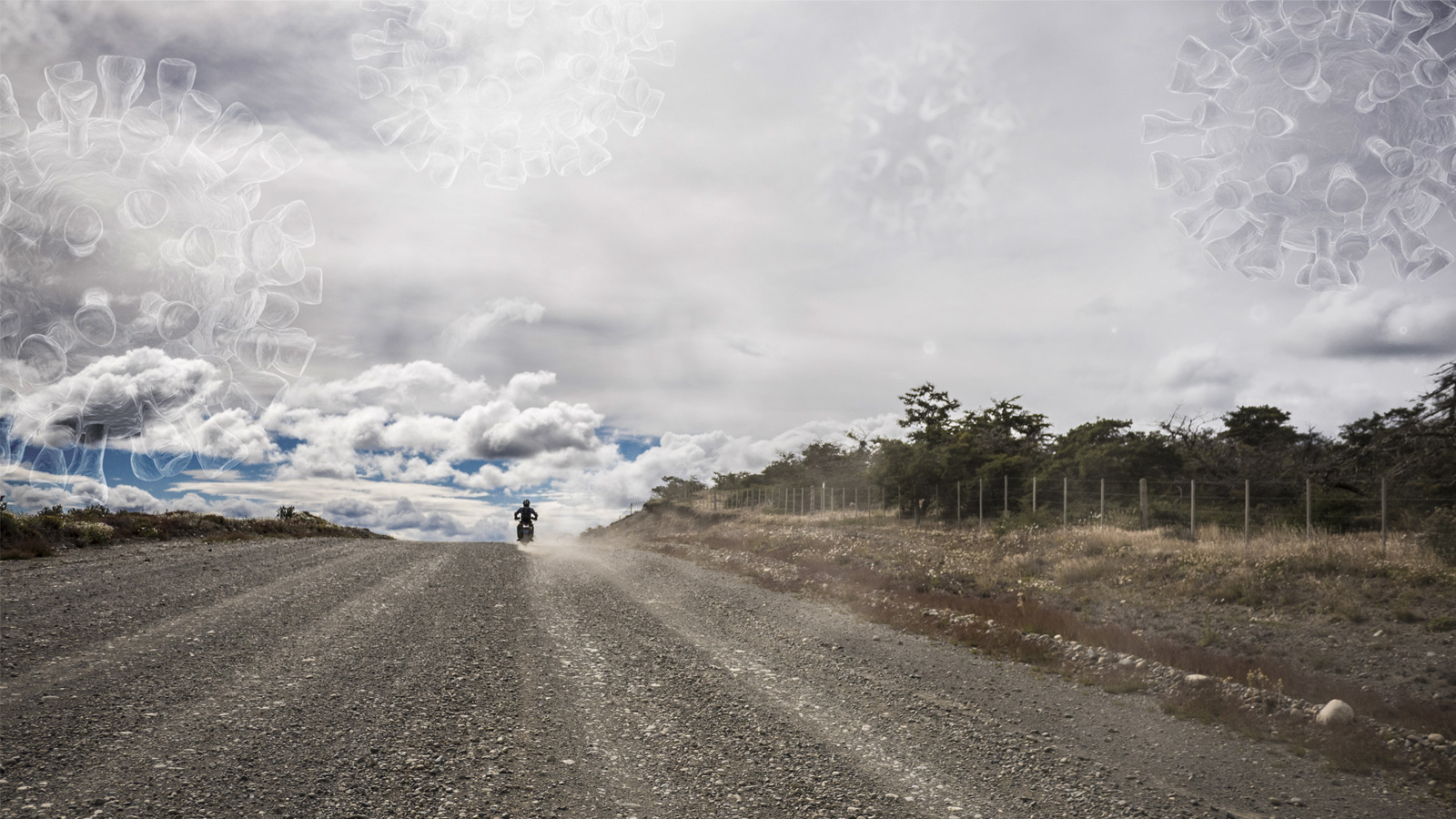“I’m 60, have no health issues and I am a nurse. Should I take my extended motorcycle trip?”
Risk Management
You prepare for months, review maps, buy essential equipment and then pack. Soon, you hope to be on the road for your three to six months trip. Sadly, Coronavirus is likely to have extended influence on your trip. There will be decisions to make about the safety of travel, about whom you travel with, and whether you should travel this season at all.
Can you hold your breath for six months? That may sound like a silly question but COVID-19 is an airborne transmitted virus that can also spread via contact. If your travels are solo this may reduce risk slightly while on the bike. But can you predict what awaits you when you stop for meals and hotels? As the nation’s number of cases increases so does your risk as you come in contact with others.
The incubation statistics from China note a 2- to 13-day incubation period. Unfortunately, patients’ viral loads don’t always mean they have noticeable symptoms so they unknowingly can share the virus. Here in America there are cases of individuals who didn’t exhibit symptoms for four days after exposure but had a very high viral load. Cough is not the first symptom that we should be concerned about. If you have a headache and feel fatigued then you should STAY HOME.
Planes, trains, factory work, and large gatherings increase the chances of your contracting COVID-19. If your travel plans include sight-seeing, you may find yourself ill with limited assistance from family and friends because you’re away from home.
“You’re 47, a smoker, 40 pounds overweight and have high blood pressure, should you?”
Gender, age, smoking, obesity, and chronic illness appear to play a big factor in severity of this disease and risk of death associated with it. In China, where about 50% of men smoke, 8% of men infected with COVID-19 died. In Spain, the mortality rate of men 70 and older was 11.4%. The mortality rate in China among men was also nearly twice that of women.
It does not appear that children and schools play a factor in the sharing of this virus. COVID-19 does not appear to be like other viruses where seasonal change improves the course of the disease either. It not expected that we will see the virus risk lessen as the season changes. In fact, in a regular flu season a 0.1% death rate has been the average. In China the death rate for COVID-19 remains between 2-3 % for all cases.
There really is no way to boost your immune system other than getting sleep, eating a balanced diet and of course staying active and taking prescribed medicines. Fluids, (non-alcoholic) when you are ill are important.
The Big Picture
As of February 15, 2020, there are over 175,000 COVID-19 cases reported throughout the world and have been 6,685 deaths. Estimates predict that there will be 48 million hospital visits associated with COVID-19, that 96 million people will contract it, and that there will be 480,000 deaths as a result of this virus. This is not something we can take lightly. It is spreading rapidly throughout the world.
Surgery masks have no real effect to protect you but can provide mild protection for others if you have COVID-19. N95 masks used in hospitals provide protection but there is already concern about the supply lines for these. If current American workers continued producing them at a 110% production rate for a year, they would not meet the current projected need to protect our health care workers.
“You’re 72, recently finished chemo for prostate cancer, had a bout of pneumonia in October, should you go too?”
There is no vaccine for COVID-19. Research with vaccines in animal studies are underway. Before it gets to the general population it will require animal response studies. Next, a small number will get the vaccine and be monitored for response and side effects. Then a larger population will need to be checked for safety and response. We could be two years from a vaccine for COVID-19. Remember Zika five years ago? There still is no vaccine for it.
In closing, I am reassessing my plans for the coming months. I feel a responsibility as a nurse to share with others what I am doing in the short term:
- Taking care of myself so that I can care for others. Sleeping eight hours a night, eating a balanced diet, and exercising outside because closed spaces increase the rate of transmission.
- Not expecting the public health department to be able to protect me from COVID-19.
- Trying to identify how I can help my family, neighbors and local community by digesting information about COVID-19 and sharing it in a manageable format.
- Donating to food banks because lots of people are struggling with loss of work, and kids, many of whom get their primary meals at school, being are out of school.
- Limiting my social activities with large groups of people.
- Washing my hands frequently and using sanitizer when no soap and water are available.
- Continuing to look for work as an APRN to help during this time of need.
- Donating blood at the next available site locally because the need for blood in America never goes away.
- I promise to stay home if I develop a headache, cough, fever.
- Locate the options for drive- up testing for COVID-19 and share it with others.
- I will continue to pray for the health of others but especially for the health care providers. As nurses, we may suffer the loss of a coworker, (China has documented the loss of several nurses and physicians). I pray for those who continue to provide care knowing this risk.
- In a time of limited resources (i.e., war), we as a nation rationed, made socks, prepared bandages to help protect our service men. It is that time again America but it is your health care providers that need our support.
Let’s band together to produce more masks and not let our hospitals have just-in-time delivery of essential care items. Let’s also address the list of 153 critical medications that America no longer makes. Many are generics produced in other countries who are affected by worldwide crisis like COVID-19.
Jill Veverka, APRN
[Editor’s Note: The coronavirus pandemic is a rapidly-evolving situation. Figures and information provided here are from mid-March. Refer to CDC.gov, your state’s official website, and other reputable sources for additional information.]

